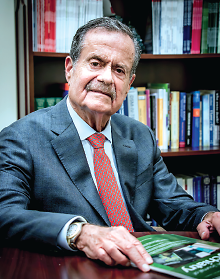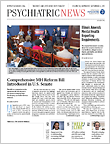After hurricanes Katrina and Rita hit the Gulf Coast region in August and September 2005, much of the mental health infrastructure was inoperable. Clinics and hospitals in some places were damaged and unusable. Clinicians of all kinds and their patients were forced to evacuate from cities like New Orleans and Gulfport, Miss. At the same time, the trauma for survivors arising from the loss of homes, jobs, and loved ones raised calls for help from outside the region.
As the storm approached, Louisiana mental health officials formally requested outside assistance from the Federal Emergency Management Agency (FEMA), said Anthony Speier, Ph.D., then disaster director for the Louisiana’s state mental health department. Even with the lead time, six weeks were needed to set up the program, partly due to a shift in responsibility from FEMA to the Substance Abuse and Mental Health Services Administration (SAMHSA). That agency needed to set up a clearinghouse to vet volunteer clinicians and organize a system to house and feed them while on site.
Meanwhile, APA’s Committee on the Psychiatric Dimensions of Disaster worked to reconnect area psychiatrists with each other, temporarily providing a remote organizational structure, since local district branches in Louisiana, Mississippi, and Texas could not function.
“They had excellent resources in the area, and we backed them up,” recalled Robert Ursano, M.D., the current chair of the committee and a professor and chair of psychiatry at the Uniformed Services University of the Health Sciences in Bethesda, Md.
Anthony Ng, M.D., then chair of APA’s disaster committee, went to Gulfport, Miss., following Katrina. Ng learned a lot about postdisaster psychiatry while working in New York City after September 11, 2001.
“In Gulfport, I met with local providers and people from the University of Mississippi to help with training in disaster psychiatry,” said Ng, now CMO at Acadia Hospital and chief of psychiatric services at Eastern Maine Medical Center in Bangor.
APA also worked with SAMHSA to recruit mental health professionals to go south. The visitors generally served for a few weeks each in shelters or other points of refuge for displaced citizens.
Today, many of those who went to the region look back with a nuanced view of their experience.
“The SAMHSA program was surprisingly well organized in the face of general chaos,” said Jeffrey Stovall, M.D., now an associate professor of psychiatry at Vanderbilt University. “We probably achieved some individual success but didn’t have much impact on rebuilding the system of care. It’s more important to have an organized response.”
At the New Orleans airport after the storm, Laurence Hipshman, M.D., M.P.H., now a psychiatrist with Kaiser Permanente in Portland, Ore., was a member of a Disaster Medical Assistance Team, doing triage for medical evacuation. Organization and coordination were erratic, he said.
“We worked with other units sent in to help, like the National Guard, but we had to make many things happen on our own,” he said, recalling, like others, the chaos of the first few days. “There was no regular source of pharmaceuticals, so we had to cobble something together on our own. People with no supplies were gathering outside the airport, creating tensions over who could get food or services.”
Washington, D.C., psychiatrist Catherine May, M.D., made five trips to the region in the year or so after the storms. She worked on a cruise ship rented by FEMA that housed first responders and their families and later served at an Episcopal tent clinic started by a nurse in Pass Christian, Miss.
May, who first trained as an emergency physician, observed that close to 50 percent of people with initial physical complaints also screened positive for posttraumatic stress disorder (PTSD) and other psychiatric symptoms. From that she concluded that even basic, hands-on general medical skills like taking vital signs or asking how a patient was feeling could open doors to mental health counseling or treatment.
Katrina also reemphasized the lessons learned after 9/11, namely, that licensed professionals needed some sort of registration and prescreening when possible.
“Spontaneous volunteers are not useful,” said Leslie Gise, M.D., of Kula, Hawaii, who came to New Orleans two weeks after the storm. “My experience at Katrina made me realize that all the seemingly boring courses on psychiatric disaster response that I sat through over the years were actually of value.”
“I learned the importance of preparedness,” said Elizabeth Henderson, M.D., who went from her home in Jackson, Miss., to Gulfport after the storm. One area that is often overlooked is the emotional status of first responders, especially when they are getting appeals for help and cannot respond. “They need time out to remain effective.”
“Much of the time the system worked well,” said Howard Osofsky, M.D., Ph.D., a professor and chair of psychiatry at Louisiana State University Health Sciences Center in New Orleans. “But sometimes there were problems of discontinuity in their relationship with local providers as volunteers arrived or left abruptly.”
Many individual clinicians were well intentioned but were not well prepared for the rigors of postdisaster psychiatry, like makeshift accommodations or the large numbers of people seeking help, added Speier. “There has to be better orientation of where they’re going, and that can’t be handled right before they arrive.”
Psychiatrists who worked in the affected areas emphasized the resilience and the variety of the people they encountered.
“The experience clarified for me both the vulnerabilities of the patients we serve and also the strength of communities to take care of themselves,” said Stovall.
May gained an appreciation of working with faith-based groups.
“I learned to value the positive, cognitively based structure of those organizations,” she said. “That’s how you infuse hopefulness and a sense of purpose.”
Insight into people on a higher level than the individual is needed, as well, said Osofsky. “Clinicians need an understanding of culture—or cultures—in the communities where they serve.”
May offered another lesson about disaster response. She observed that there is a time to go in and work, but there comes a time to leave, because the region has its own existing resources. “They get back up in action, and you’re not needed there anymore,” she said.
Today, there may be a greater awareness of what needs to be done after a disaster, but that awareness is not matched by an increase in community preparedness, said Ng.
Mental health professionals need to assert their role in the preplanning stages of disaster response, said Henderson. “Mental health is the last thing planners think about and the first thing that they miss when disaster happens.” ■
Early coverage of the effects of hurricanes Katrina and Rita in Psychiatric News can be accessed
here and
here.

